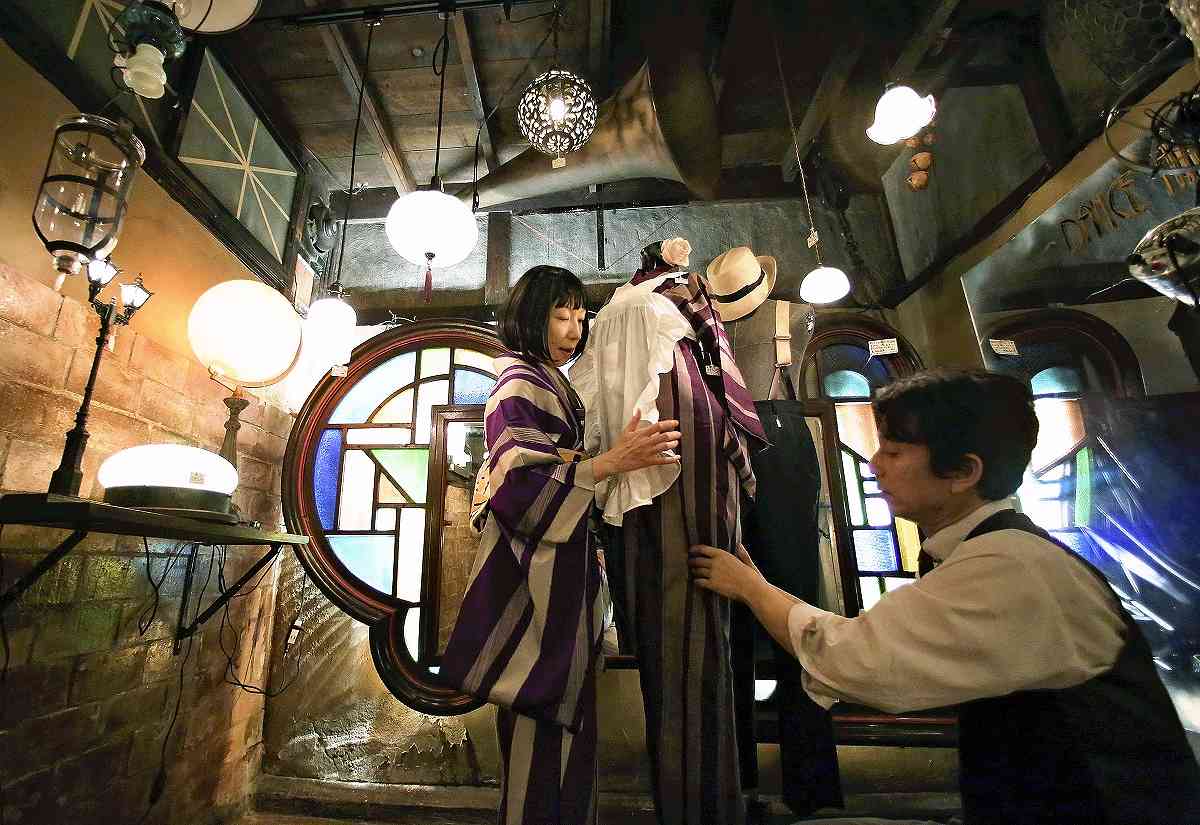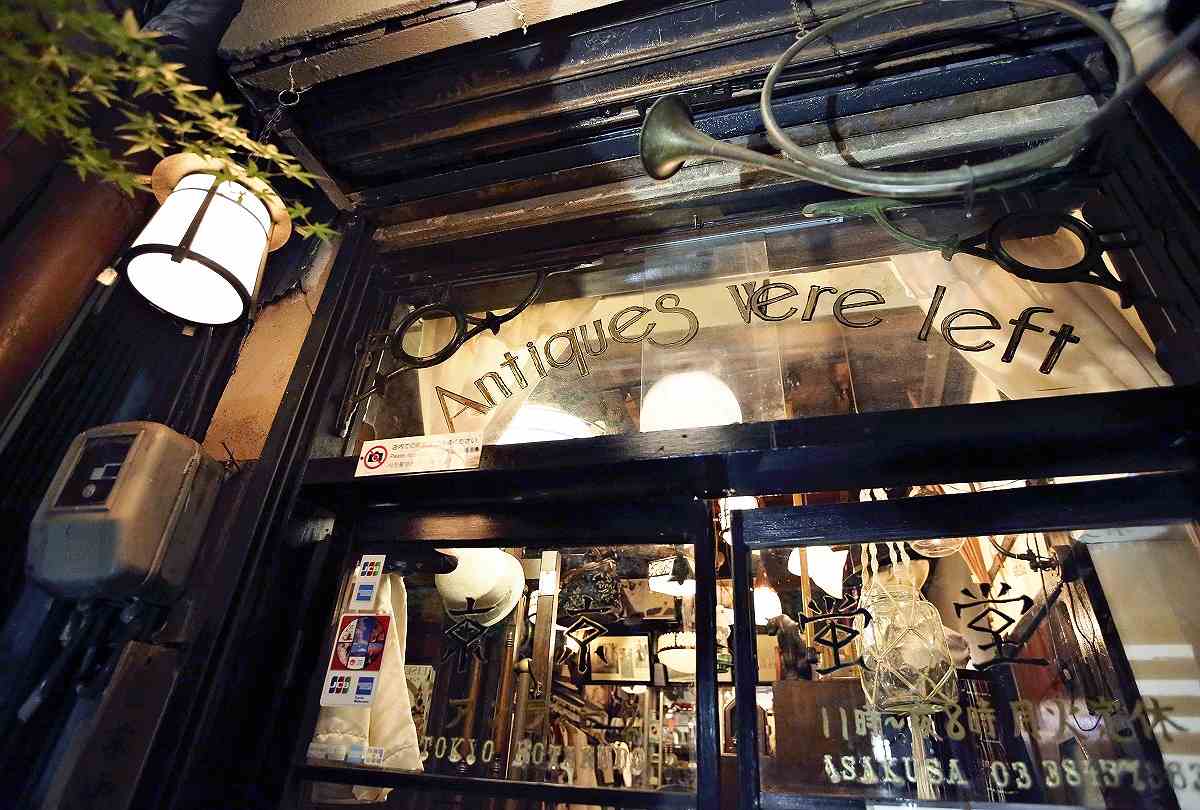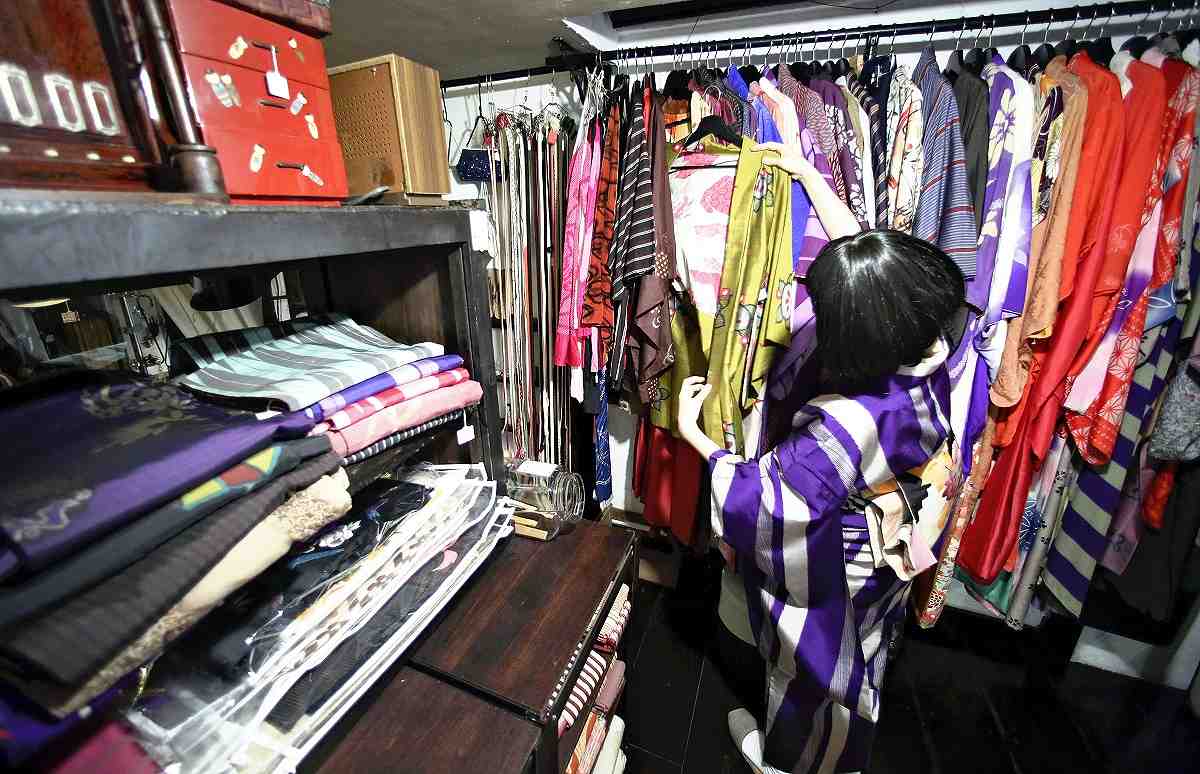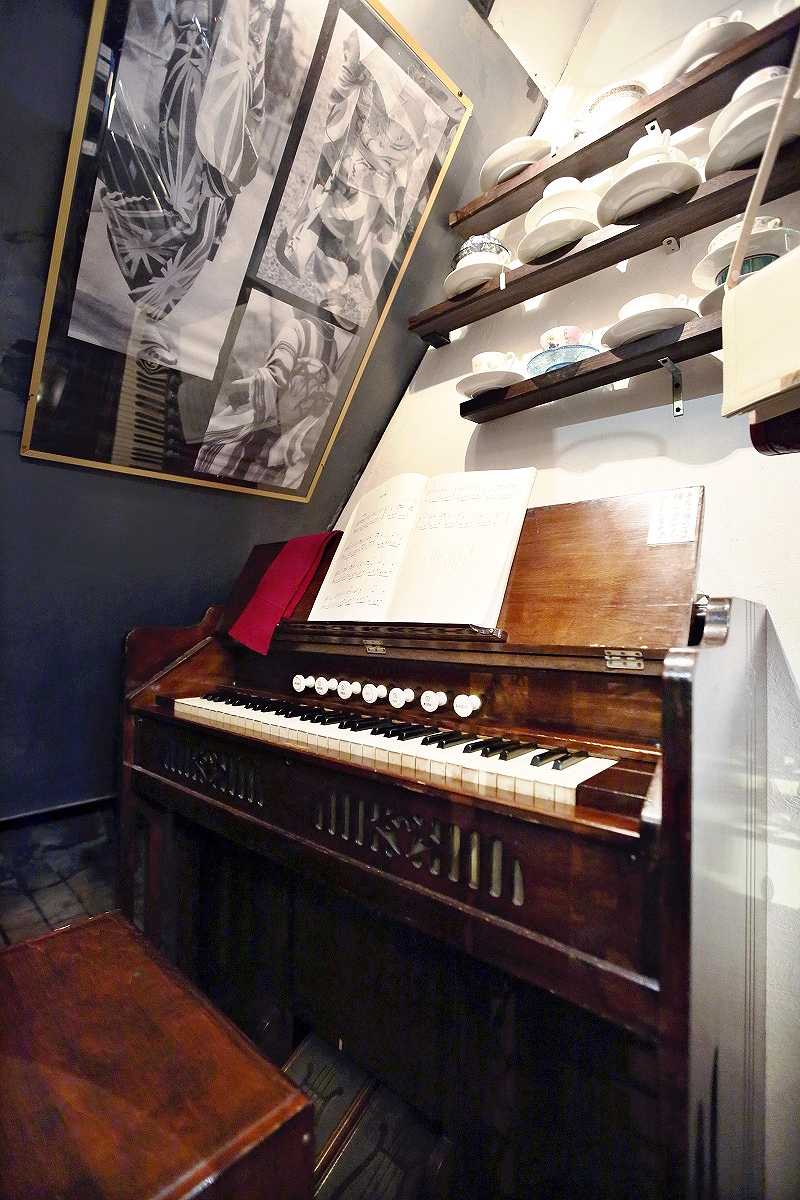
Junichiro Inamoto and his wife Yoko recreate a typical apron worn by a woman working at a cafe in the Taisho era (1912-1926) in a semibasement room resembling a dance hall.
13:46 JST, December 18, 2023
Beckoned by a sign on Asakusa Rokku Street that read “Favorites for mobo and moga,” I passed through a narrow road and found myself surrounded by the retro atmosphere of the Taisho era (1912-1926). “Mobo moga” was how the youth of that era was often referred to, a shortening of “modern boys” and “modern girls,” who were excited to wear the latest fashions of the time. Tokyo Hotarudo in Taito Ward, Tokyo, is an antique shop that mainly handles items from that era.
A static-laden broadcast from a radio greeted me as I opened the glass door. The shop uses the Taisho era radio as a speaker, which receives sounds wirelessly from a computer. “We can create a future by merging the old with new technologies,” said shop owner Junichiro Inamoto, 51.

Lamps that create a warm atmosphere welcome customers.
The shop is housed in an old building that is a former dormitory for employees of an eatery that catered to the common people. Inamoto and his wife, Yoko, 56, refurbished the building by paving the floor with bricks and plastering the walls, and then opened the shop in 2008. The shop is full of traditional Japanese clothes and accessories of yesteryear, which include a rotary dial telephone and a pedal sewing machine. I, who was born in the Heisei era (1989-2019), had never seen many of these items before.

Colorful kimono from the Taisho and early Showa eras
One such item was a kori kaban, a traditional Japanese wicker trunk suitcase. Kori refers to a basket to keep clothes and such. Craftsmen in the Taisho era made the traditional item into the shape of a trunk, which was popular in those days. “The kori kaban suitcase is not just a simple imitation of a Western product. Japanese people demonstrated their creativity and merged Western and Japanese items, which I think makes them more attractive,” Inamoto said.
Not only do the couple buy items at markets, but they also negotiate with individual owners. “An antique shop is essentially the last stop in the life of a product. We want to keep these items for the future along with the memories of their owners,” Inamoto added.
Down in the semibasement that resembles a dance hall, a huge stained-glass panel caught my eye. It was once used at a Yukaku red-light district, according to the shop. The couple regularly holds get-togethers such as dance gatherings so that customers not only have contact with a retro culture but also experience it.
As society has gone through changes through the Taisho, Showa, Heisei and Reiwa eras, Inamoto and his wife are trying to pass the wishes and excitement of people living in those times on to the future. As I listened to Inamoto, I felt that working at an antique shop was somewhat like working as a reporter. With this feeling in my heart, my brief “time travel” came to an end.

An organ from the Showa era (1926-1989) was collected by Inamoto from the late owner’s wife and then repaired. Customers are allowed to play it.
***
Tokyo Hotarudo
Address: 1-41-8, Asakusa, Taito Ward, Tokyo
Access: A two-minute walk from Asakusa Station on the Tsukuba Express Line.
Memo: Open from 11 a.m. to 8 p.m. and closed on Mondays and Tuesdays. The shop leases their products for two weeks at 30% of their respective prices.
Related Tags
"Features" POPULAR ARTICLE
-

Sanrio to Open Museum in Yamanashi Pref. Dedicated to Founder, Exhibits Include Hello Kitty, Other Characters
-

Autumn Foliage Surrounds Visitors to Tokyo’s Showa Kinen Park
-

My Daughter No Longer Speaks to Me, But I Want to See Her and My Grandchild
-

Kumamoto: Public Bath Refurbished as Library Where You Can Chat, Take Photos
-

Frozen Vegetables: Demand Rises for Convenient, Tasty Domestic Produce
JN ACCESS RANKING
-

Tokyo Economic Security Forum to Hold Inaugural Meeting Amid Tense Global Environment
-

Keidanren Chairman Yoshinobu Tsutsui Visits Kashiwazaki-Kariwa Nuclear Power Plant; Inspects New Emergency Safety System
-

Imports of Rare Earths from China Facing Delays, May Be Caused by Deterioration of Japan-China Relations
-

University of Tokyo Professor Discusses Japanese Economic Security in Interview Ahead of Forum
-

Japan Pulls out of Vietnam Nuclear Project, Complicating Hanoi’s Power Plans

























